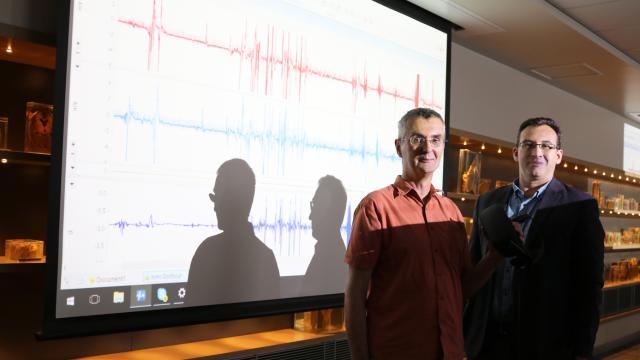“It’s imperative our troops are forearmed with strategies to ensure they remain in control of the situation and are equipped with the skills to make a level-headed decision,” Associate Professor Eugene Nalivaiko says.
Professor Nalivaiko is working with fellow neuroscientist Associate Professor Rohan Walker on a solution – using Virtual Reality.
The researchers, both affiliates of the Hunter Medical Research Institute, are developing what they call “enhanced resilience training”, in VR, for Australian soldiers.
The project is the first of its kind, and the Minister for Defence, Christopher Pyne, has thrown $2.2 million in funding behind it.
Basically the project is going to look at how stress changes the way the brain works – and how we can better equip our troops to cope under duress.
Associate Professor Walker says there are two main factors at play to ensure performance under pressure.
Firstly, cognitive reframing, which involves identifying and then disputing irrational thoughts. Reframing is taking a step back and objectively looking at the scenario to find positive alternatives.
The second is tactical breathing. Although it may sound simple, breathing is key as it is the only thing we can regulate under pressure.
When you’re breathing properly, respiration and heartrate are controlled and you have high levels of cognitive flexibility to make better decisions.
Working with the University of Southern California, the neuroscientists are designing a virtual reality experience that aims to replicate real-world scenarios soldiers may face. Part of the training process will be developing skills in tactical breathing that can be applied in a virtual, and then, real-world environment.
“The idea will be that trainees can master the skill in a measurable situation where we can control the difficulty of the task to ensure they’re prepared before moving to a real-world conflict situations,” Associate Professor Nalivaiko said.
“The advantage of utilising VR in this way is that w’’re providing an innovating, engaging and immersive experience which produces objectively verifiable results,” Associate Professor Walker added.
The combination of biometrics and VR for testing is also giving the team a whole new – and far more accurate – way of collecting data.
Associate Professor Walker points out that it can be difficult to test for things like cognitive resilience when subjects have to be the judge of their own ability.
“The benefits of utilising a virtual scenario test to simulate your response are huge, but one major factor is that we can provide an accurate picture of where a trainee is at in the testing and how well they have responded to the simulated scenarios,” Associate Professor Walker said.
“Psychological education should be of paramount importance, and I am thrilled we have the opportunity to assist in enhancing resilience and ensuring Australian troops are at their best when working under pressure” Professor Walker said.
